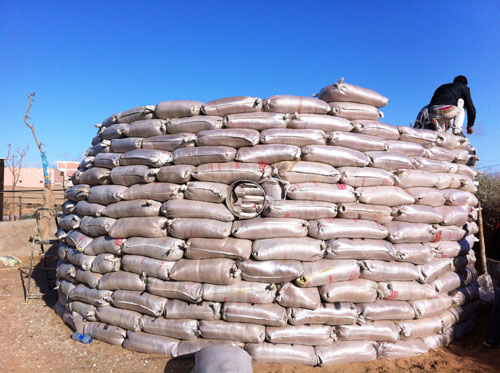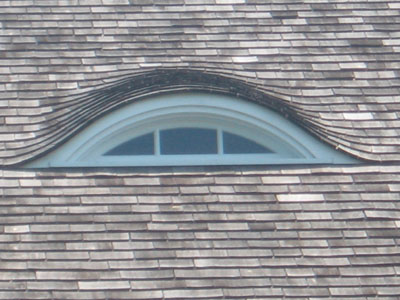Sometimes people send us emails asking specific questions about their personal projects, and we usually try to help them as best we can. Not long ago we got the following email with several photos attached:
I came up with the idea of building my own dome here in south Morocco where I live. I got some refurbished polypropylene bags and decided to do a 5m diameter dome to provide a shelter for horse food and equipment.
I decided to use the soil from our garden which is very close to sea sand. Since this was an unstabilized soil, I decided to tie the bags very firmly at the top to prevent any sand from slipping out, and also damped the sand so it could be tamped better. I dug a trench down to half a meter that I leveled with double bags filled up with small rocks, and then started the courses of bags, with two barbed wire between each course. We went up to half a meter straight, and then started to corbel the bags inwards. We have been working for two weeks now in a team of four, and it’s getting quite high. I wasn’t planning on doing a loft, since there would be no use of it for me. I’m getting a bit worried as we are working at higher levels that the whole thing might collapse, so I thought I should give it a try asking your advice. It feels quite strong while working on it, but when tamping, you can really feel the strikes wherever you are placed up on the wall.



